(Click the images for a larger view)
This is a Virtual geocache.
There is no physical cache or log at the posted coordinates.
Please see the logging requirements in this listing.
A great many shipwrecks have occurred near the mouth of the Columbia River.
In fact, the region is known as the Graveyard of the Pacific.
Perhaps the most well-known of these wrecks is the Peter Iredale.
You can visit the remains of this ship at the posted coordinates.
Peter Iredale Under Sail (Photo of painting)

The Iredale was a large sailing vessel with four masts.
She was constructed of an iron frame covered with steel plates.
Peter Iredale circa 1900 (Public Domain)

The Peter Iredale was built in England in 1890.
She was named after her owner who owned a fleet of ships and lived in Liverpool.
The ship was built during the Industrial Revolution.
The age of wooden sailing ships was ending and giving way to iron and steel ships.
Steam power was replacing sails and masts.
Some of the iron sailing ships were converted to steam.
The Iredale, though, was already aging, and remained a sailing ship and never converted.
Peter Iredale at anchor, circa 1900 - Wilhelm Hester (Public Domain)
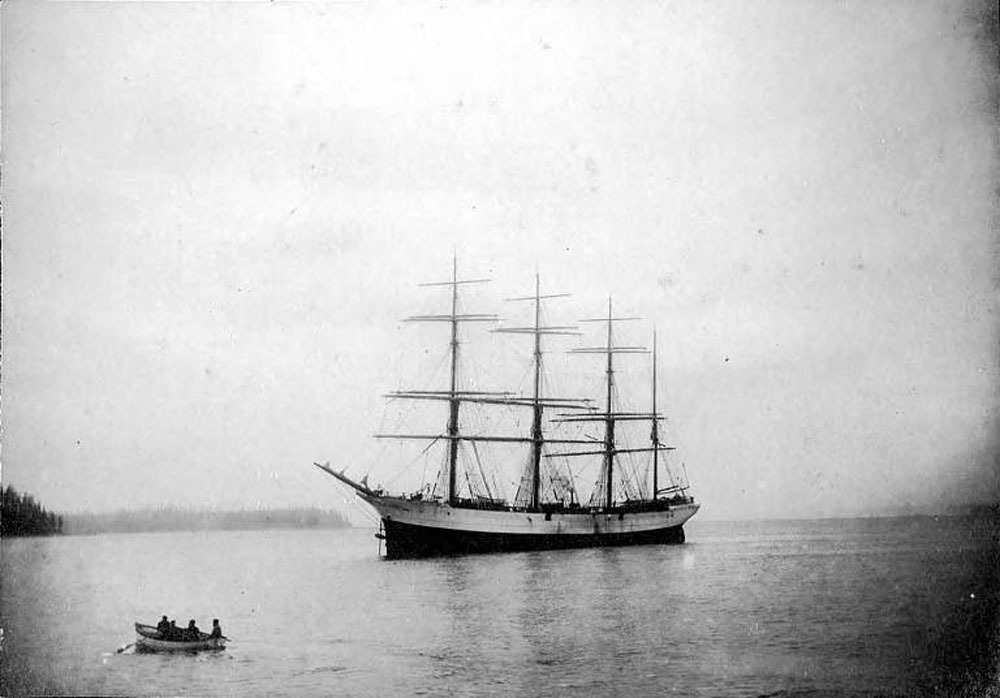
On September 26, 1906, the Iredale sailed from Mexico, bound for Portland.
The ship was not carrying any cargo other than a load of ballast.
Ballast consists of heavy material such as sand, gravel or iron placed low in the hull of a ship to improve her stability.
She was carrying a crew of 27 with Captain H. Lawrence.
The plan was to sail up the Columbia River to Portland for a load of cargo.
The ship experienced a month of excellent sailing conditions until the night of October 25, 1906.
In the early morning hours, Captain Lawrence sighted Tillamook Rock Lighthouse.
This lighthouse can still be seen offshore on a rock island between Seaside and Cannon Beach.
Misty air made for low visibility.
Strong winds were blowing the ship toward shore.
The ship altered course in an attempt to reach the Columbia River.
All attempts were futile, and the ship ran aground on sandy shores in northern Oregon.
Peter Iredale Aground (Public Domain)
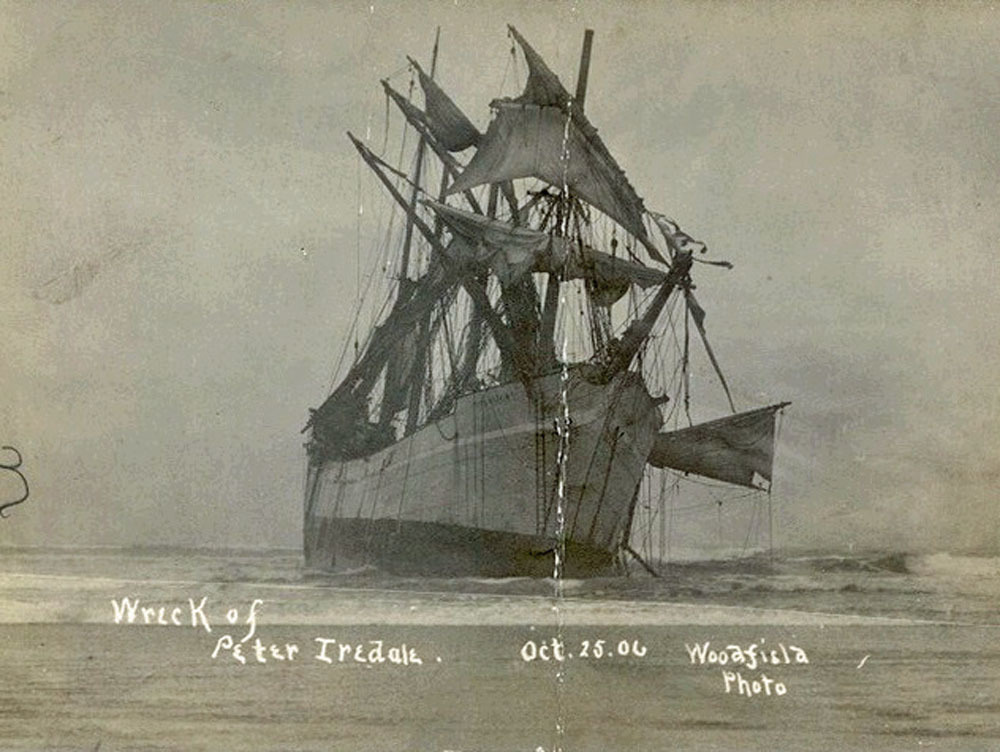
A lifeboat was sent out from Hammond, Oregon.
All 27 crew members were safely rescued and sent to nearby Fort Stevens.
Peter Iredale Aground (Courtesy Columbia Pacific Heritage Museum)
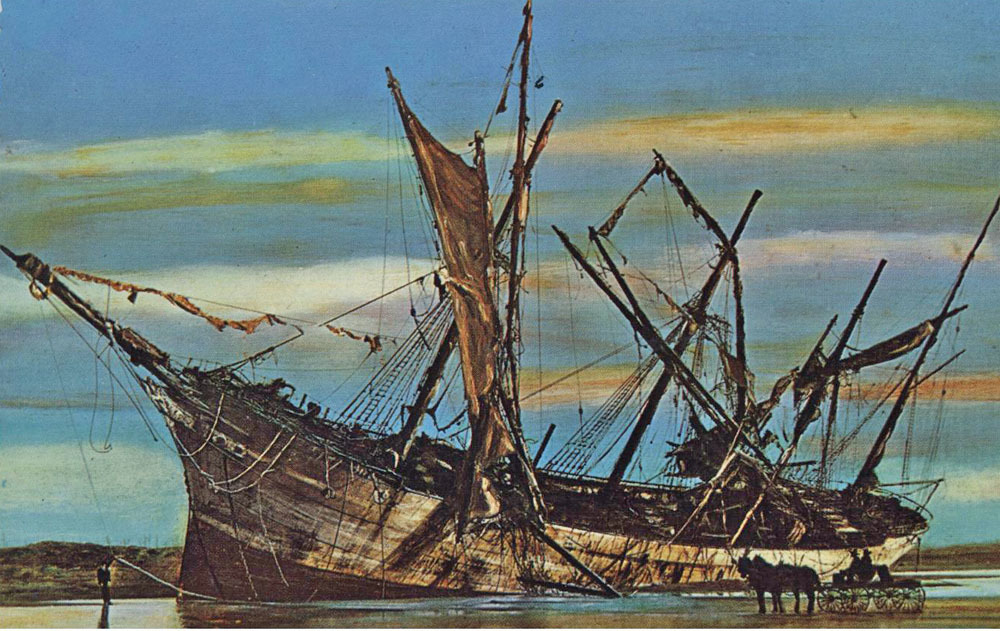
The ship's masts were snapped in the wreck and she became deeply embedded in sand.
Wrecked on Clatsop Beach (Public Domain)

In November, a court hearing was held in Astoria.
The captain and crew were not blamed for the loss, and even received a commendation.
After the Wreck (Public Domain)
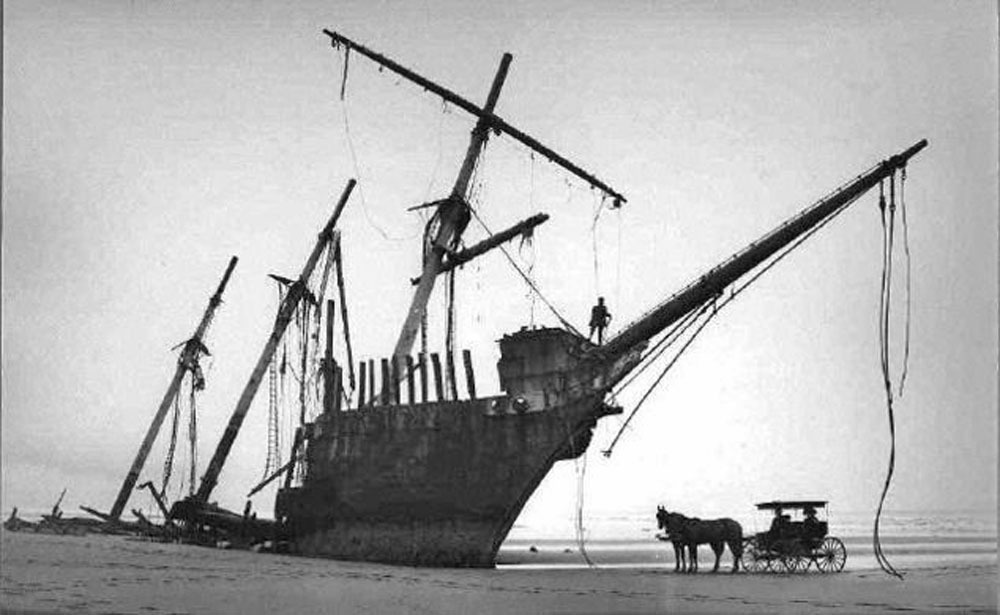
The majority of the wreckage was removed in salvage operations.
However, the bow, ribs and parts of masts remain to this day.
The Wreck in May, 1982 (Seawind)...

...and in September, 2017 (Seawind)
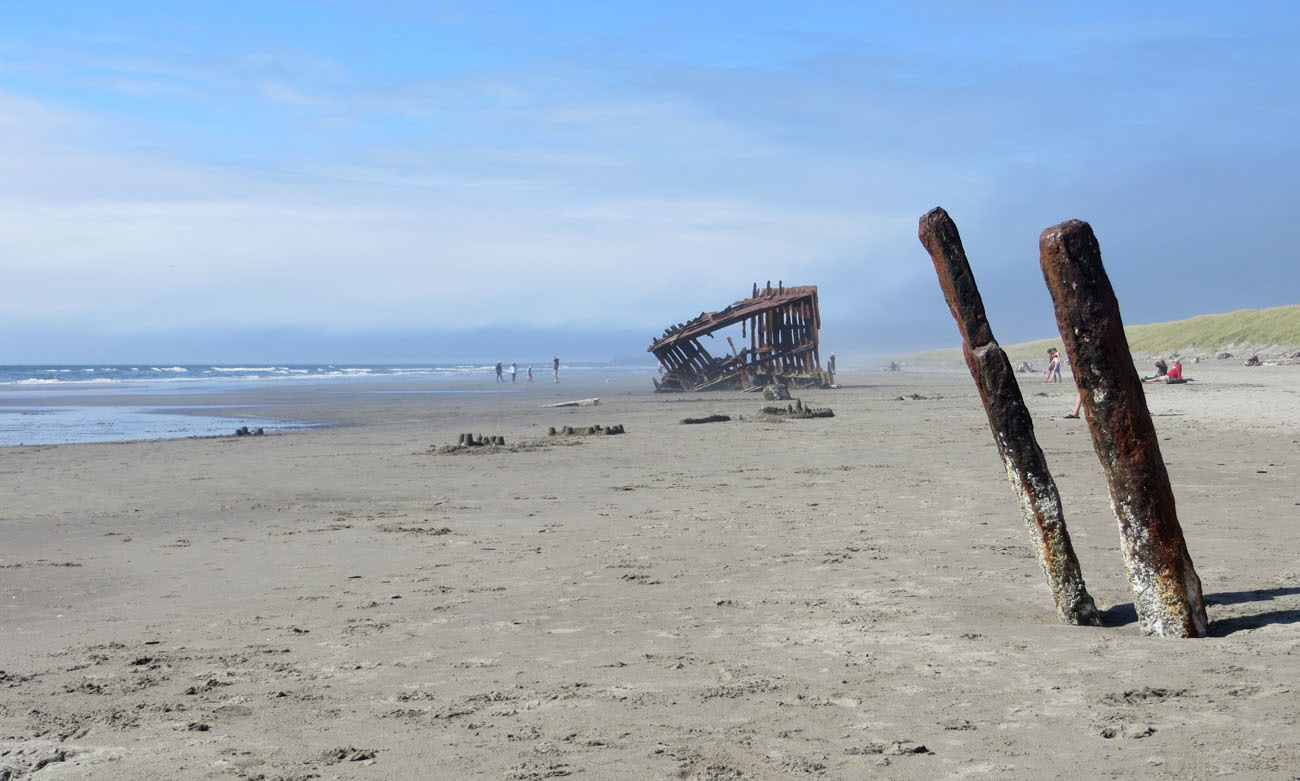
The remains of the Peter Iredale are on the beach in Fort Stevens State Park.
The area is open from 6 AM to 10 PM.
There is no fee to enter Fort Stevens or to park near the Wreck.
The Iredale is a major tourist attraction and very interesting site to visit.
To get a feeling for her size, stand near the protruding masts shown in the above photo,
and look toward the bow, some 270 feet away.
(Her overall length was 285 feet)
Kite Aerial Photo, August, 2005 (Seawind)

During low tide, the remains are high and dry and can be explored easily.
At higher tides, the Wreck is an island.
Cycling to the Iredale, October, 2005 (Seawind)
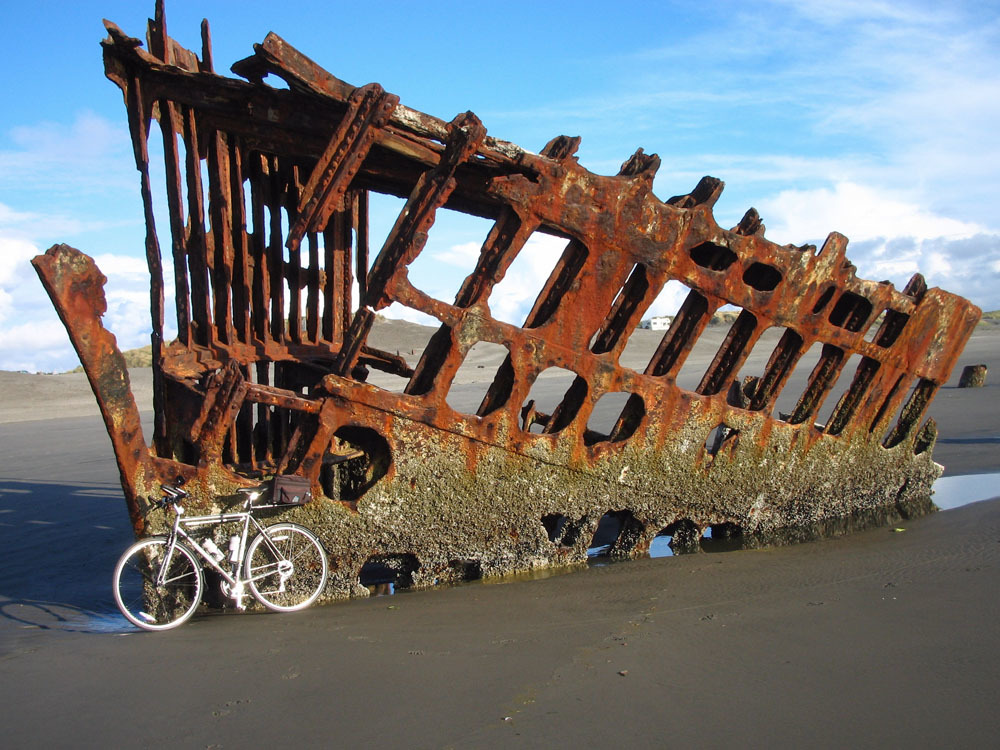
Because the Wreck is so accessible, the Peter Iredale has remained very popular,
although she was not particularly remarkable in other respects.
Try searching Amazon for "Peter Iredale".
The Wreck Today - September, 2017 (Seawind)

In 2005, a Regular geocache was hidden on the Peter Iredale:
99 Years Ago Today
It had a short life and was only logged twice.
Not an easy place for a cache to succeed!
This Virtual cache marks the 111th Anniversary of the Wreck!
To Log This Cache
After visiting with Peter Iredale, please log your Virtual cache find online.
The logging requirements are:
1 - Post a photo of the Iredale, possibly including yourself or your party.
2 - In your log (no need to send an email), please answer these questions:
A - The remains you see on the beach are over 100 years old.
How much longer do you think they will survive?
B - Have you seen any other shipwreck remains?
Tell about them if you would like.
Above all, enjoy your visit to this beautiful location!
Captain Lawrence had a final wish for his doomed ship:
"May God bless you, and may your bones bleach in the sands."
At Sunset (Robert Bradshaw, Wikimedia Commons)
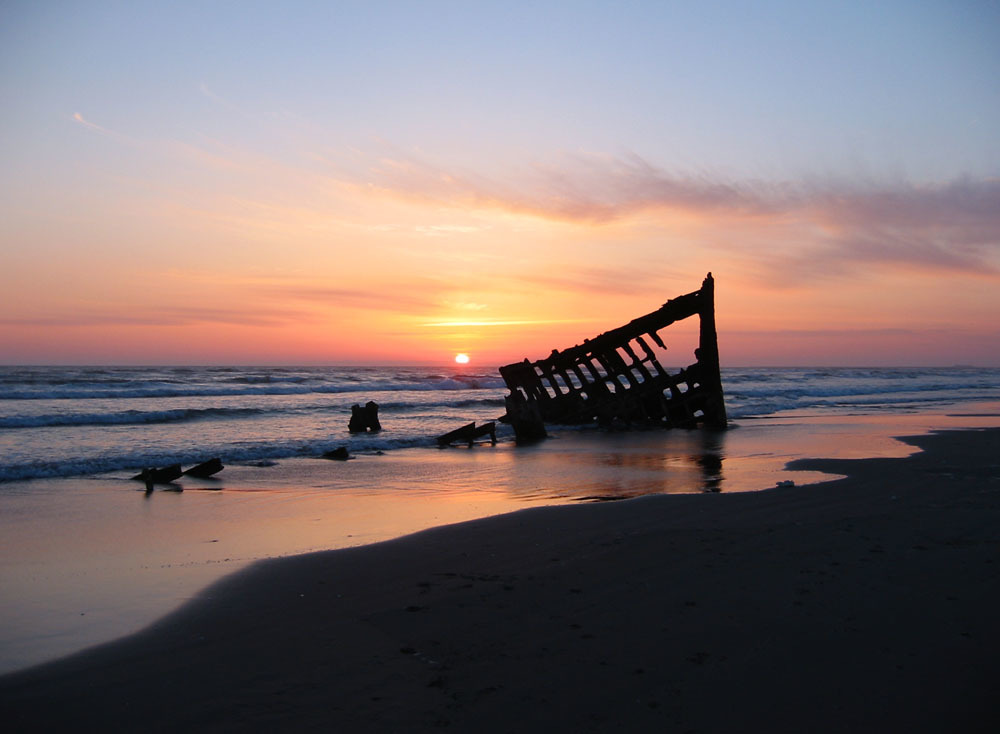
Virtual Reward - 2017/2018
This Virtual Cache is part of a limited release of Virtuals created between August 24, 2017 and August 24, 2018.
Only 4,000 cache owners were given the opportunity to hide a Virtual Cache. Learn more about Virtual Rewards on the Geocaching Blog.